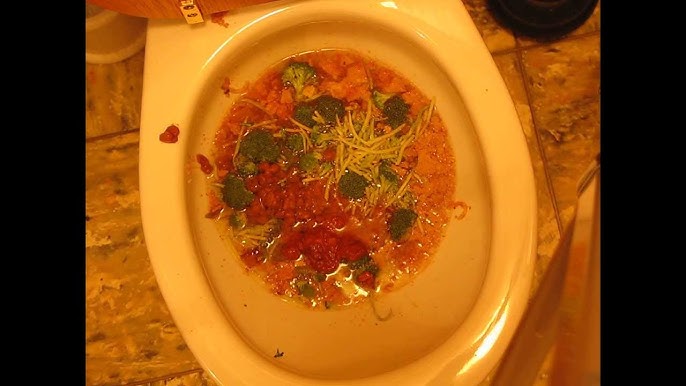Can You to Flush Food in the Toilet?
Can You to Flush Food in the Toilet?
Blog Article
The writer is making a few great pointers regarding Flushing Food Down the Toilet? as a whole in this great article which follows.

Intro
Many people are typically faced with the predicament of what to do with food waste, especially when it involves leftovers or scraps. One usual concern that occurs is whether it's fine to flush food down the bathroom. In this short article, we'll explore the reasons why individuals may take into consideration flushing food, the repercussions of doing so, and different approaches for correct disposal.
Reasons why individuals could take into consideration flushing food
Lack of recognition
Some people may not recognize the prospective damage caused by flushing food down the toilet. They may mistakenly think that it's a safe practice.
Convenience
Flushing food down the commode may feel like a quick and simple service to throwing away undesirable scraps, particularly when there's no nearby trash bin available.
Idleness
In some cases, people might merely select to flush food out of sheer negligence, without taking into consideration the repercussions of their actions.
Effects of flushing food down the toilet
Ecological effect
Food waste that ends up in waterways can add to air pollution and injury marine environments. Furthermore, the water utilized to flush food can stress water resources.
Plumbing concerns
Purging food can result in clogged up pipelines and drains pipes, triggering pricey plumbing repairs and troubles.
Sorts of food that must not be purged
Coarse foods
Foods with coarse structures such as celery or corn husks can obtain entangled in pipes and create blockages.
Starchy foods
Starchy foods like pasta and rice can absorb water and swell, bring about clogs in pipes.
Oils and fats
Greasy foods like bacon or cooking oils need to never ever be flushed down the commode as they can solidify and cause clogs.
Appropriate disposal methods for food waste
Making use of a waste disposal unit
For homes geared up with garbage disposals, food scraps can be ground up and flushed through the plumbing system. Nonetheless, not all foods appropriate for disposal in this way.
Recycling
Specific food packaging products can be reused, lowering waste and decreasing ecological impact.
Composting
Composting is an environment-friendly way to take care of food waste. Organic materials can be composted and used to enhance dirt for gardening.
The importance of correct waste monitoring
Minimizing ecological harm
Correct waste management techniques, such as composting and recycling, assistance decrease air pollution and protect natural resources for future generations.
Safeguarding pipes systems
By avoiding the method of flushing food down the toilet, homeowners can avoid costly plumbing fixings and maintain the stability of their pipes systems.
Final thought
To conclude, while it might be alluring to flush food down the bathroom for benefit, it's important to comprehend the prospective repercussions of this action. By taking on proper waste management methods and getting rid of food waste sensibly, individuals can add to much healthier plumbing systems and a cleaner environment for all.
FLUSH FOOD DOWN THE TOILET?
FLUSHING FOOD CAN CAUSE BLOCKED DRAINS IN YOUR HOME
All of the plumbing fixtures in your home are connected to the same sewer pipe outside of your home. This outdoor sewer pipe is responsible for transporting all the wastewater from your home to the Council sewer mains. Even small pieces of food that go down the kitchen sink can cause problems for your sewer. It should therefore be obvious that flushing larger bits of food, such as meat, risks a clog in either the toilet itself or the sewer pipes. Flushing greasy food is even more problematic because oil coagulates when it cools, coating the interior lining of your pipes.
THE TOILET IS NOT A BIN
Food isn’t the only thing that people shouldn’t be flushing down the toilet. People use the toilet to dispose of all kinds of things such as tampons, makeup wipes, dental floss, kitty litter and even underwear. Water goes to great lengths to educate residents about the high costs and stress placed on wastewater treatment systems simply from people flushing the wrong stuff down the toilet. It costs taxpayers millions of dollars each year, and homeowners thousands in blocked drain repairs.
FLUSHING FOOD IS A WASTE OF WATER
Flushing food is a waste of our most precious resource - water. In June this year Level 1 water restrictions were introduced to protect water supply from drought conditions. Much of New South Wales continues to be affected by prolonged drought with recent figures revealing up to 97 per cent of the state remains in drought. Depending on whether you have a single or dual flush toilet, every single flush uses between five and 11 litres of water. In the current climate this is a huge amount of water to be wasting on flushing food that should be placed in the bin (or better yet, the compost).
https://www.jabplumbingsolutions.com.au/blog/can-you-flush-food-down-the-toilet

As a keen person who reads on , I figured sharing that excerpt was a good idea. If you please take the opportunity to promote this page if you liked it. We cherish your readership.
Schedule Your Job Now Report this page